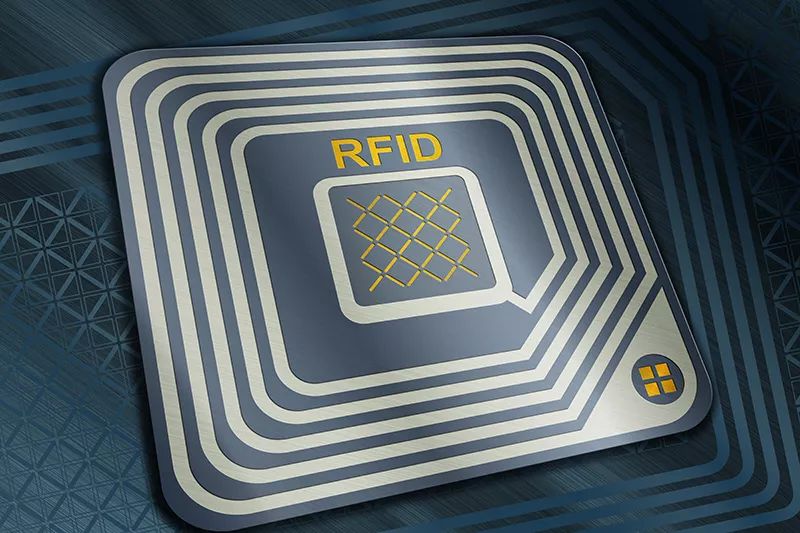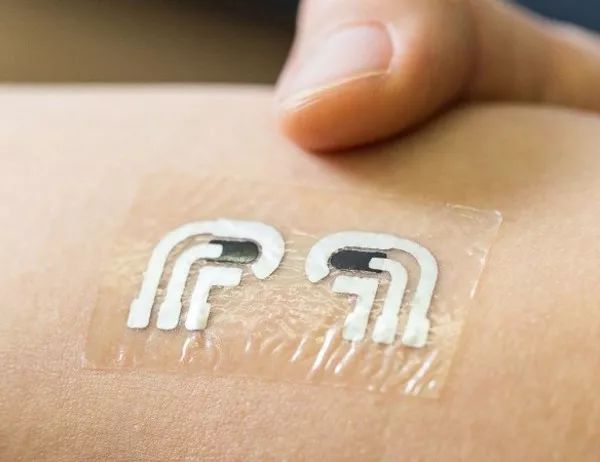|
管理员

|
麻省理工学院科研人员研发出具有传感器功能的 RFID 标签,化学物质探测效率再上一个台阶
如今,很多零售商和生产商都使用 RFID(射频识别)标签追踪产品。RFID 标签的外观像一张贴纸,内含天线和芯片。当被贴在牛奶罐或衣领上时,使用接收机就可以读取 RFID 标签中存储的产品名称、状态和产地。除此之外,RFID 标签还被广泛应用于各种产品的物流管理、娱乐场所客流管理和运动管理中。 

麻省理工学院自动化标识实验室(Auto-ID Lab)长期以来一直处于 RFID 技术的研发前沿。近日,该实验室将传感器功能融入 RFID 标签,研发出一种工作在超高频(UHF)波段的 RFID 标签,能测量葡萄糖浓度,并将信息转发出来。在未来,该团队计划用该 RFID 标签来感知环境中的化学物质和气体,比如一氧化碳。 参与研究的麻省理工学院机械工程研究生 Sai Nithin Reddy Kantareddy 表示,长期以来,研究人员一直试图拓展 RFID 的功能,将具有传感能力的 RFID 标签贴在各个地方,组成巨大的廉价探测网络,用来探测一氧化碳或者氨气,而无需电池供电。 Kantareddy 与研究科学家 Rahul Bhattacharya,以及麻省理工学院开放学习副总裁兼 Daniel Fort Flowers 机械工程教授 Sanjay Sarma 共同开发了这款新型 RFID 标签。 
图丨Sanjay Sarma Sarma 表示,RFID 标签是最廉价、最低功耗的射频通信工具。因此,RFID 标签融合传感功能,是物联网研究的一项里程碑。 以天线为中心的设计难逃多径干扰
之前,RFID 标签有多种类型,包括自带电池的主动 RFID 和不带电池的被动 RFID。两种标签都包含一个小天线,用户可以通过阅读器读取标签中微型芯片中的信息。主动 RFID 标签无需外部供能,而被动 RFID 标签通过阅读器发射的微波获取能量。 
近来,研究人员一直试图在被动 RFID 标签中融入传感功能。努力的方向主要包括研发能够对环境中的特定因子做出反应的天线,然后,天线向阅读器发送不同频率或者不同信号强度的数据,表明探测到了某种物质。 例如,Sarma 团队之前设计了一款 RFID 标签用的天线,会在不同的湿度下用不同的波形传输信号。他们还设计了能通过紧贴血管感知贫血的 RFID 标签。 然而,Kantareddy 认为,这种特定反应天线有一个弱点,就是多径干扰(multipath interference)。即阅读器接收到的不仅是来自 RFID 标签的直接应答信号,还有直接应答信号通过环境反射到达阅读器的多径信号。多径信号会干扰信息的正常接收,导致虚警或者漏警。 基于芯片的新型设计
Sarma 团队另辟蹊径,在芯片上做文章。他们在市面上采购了能在半主动(拥有电池,但不主动发射信号)和被动两种模式下工作的 RFID 芯片,然后为其加上标准天线。接着,他们在市售芯片上附加了设计的新芯片,使得芯片组只有在特定环境刺激下才激活半主动 RFID 模式,发射一组特定信号。该信号与被动 RFID 模式下的信号不同,能可靠地通知接收者环境中出现了某种特定物质。 Kantareddy 表示,这种方案比基于天线的传感 RFID 技术更加可靠,用户不易受到多径效应的干扰。接下来,团队将致力于通过研究新的数据格式和增强发射信号的功率,进一步提高发送数据的可靠性,降低误报警可能性。 Bhattacharyya 强调,新方案还解决了基于天线的 RFID 传感技术面临的一大问题——大量 RFID 标签同时发射时的相互干扰。之前被大量短距离被动标签发出的信号搞得困惑不已的用户,现在可以把阅读器放在远处,只有当环境中确实出现特定物质时,阅读器才会发出警报。 即插即用型传感器
在演示实验中,研究团队展示了一款基于市售葡萄糖传感器打造的 RFID 葡萄糖传感器。在葡萄糖接触到标签时,传感器中的电解质发生化学反应,产生电能,给 RFID 提供额外能量。 接着,RFID 标签脱离被动模式,转换为半主动模式。滴加的葡萄糖越多,半主动模式持续的时间就越长。 Kantareddy 表示,用户一接到半主动模式的信号,就可以知道标签已经发现葡萄糖。用户还可以进一步根据半主动模式的持续时间,来测定葡萄糖含量。 当然,目前新型 RFID 葡萄糖探测器的性能还比不上市售的成熟葡萄糖探测器。Kantareddy 表示,目前团队的主要目标不是研发葡萄糖探测器,而是展示,新型 RFID 探测器可以比传统的基于天线的 RFID 探测器更可靠地发送信号。 
此外,新型 RFID 探测器的效率更高,因为一方面,在没有感测到目标物质时,RFID 标签工作在被动模式,并不耗电;另一方面,环境中的目标物质本身在接触探测器时也会产生能量,因此发送信号的过程耗费电池并不多。 目前,新型 RFID 标签发射的信号可以在 10 米外接收,而现有技术只能保证 1-2 米外的接收。 接下来,团队计划研发一种一氧化碳检测器。Kantareddy 指出,基于天线的 RFID 传感器设计,对于每种特定的目标物质,都要重新设计天线。而新设计无需更换天线,只需加入目标物质的检测芯片。因此,新型 RFID 传感器可以低成本大面积部署,用来对锅炉、输气管等关键系统进行“即插即用”式的监测。 -End- 编译:离子心 校审:XHR MIT engineers configure RFID tags to work as sensors Platform may enable continuous, low-cost, reliable devices that detect chemicals in the environment. These days, many retailers and manufacturers are tracking their products using RFID, or radio-frequency identification tags. Often, these tags come in the form of paper-based labels outfitted with a simple antenna and memory chip. When slapped on a milk carton or jacket collar, RFID tags act as smart signatures, transmitting information to a radio-frequency reader about the identity, state, or location of a given product. In addition to keeping tabs on products throughout a supply chain, RFID tags are used to trace everything from casino chips and cattle to amusement park visitors and marathon runners. The Auto-ID Lab at MIT has long been at the forefront of developing RFID technology. Now engineers in this group are flipping the technology toward a new function: sensing. They have developed a new ultra-high-frequency, or UHF, RFID tag-sensor configuration that senses spikes in glucose and wirelessly transmits this information. In the future, the team plans to tailor the tag to sense chemicals and gases in the environment, such as carbon monoxide. “People are looking toward more applications like sensing to get more value out of the existing RFID infrastructure,” says Sai Nithin Reddy Kantareddy, a graduate student in MIT’s Department of Mechanical Engineering. “Imagine creating thousands of these inexpensive RFID tag sensors which you can just slap onto the walls of an infrastructure or the surrounding objects to detect common gases like carbon monoxide or ammonia, without needing an additional battery. You could deploy these cheaply, over a huge network.” Kantareddy developed the sensor with Rahul Bhattacharya, a research scientist in the group, and Sanjay Sarma, the Fred Fort Flowers and Daniel Fort Flowers Professor of Mechanical Engineering and vice president of open learning at MIT. The researchers presented their design at the IEEE International Conference on RFID, and their results appear online this week. “RFID is the cheapest, lowest-power RF communication protocol out there,” Sarma says. “When generic RFID chips can be deployed to sense the real world through tricks in the tag, true pervasive sensing can become reality.” Confounding waves Currently, RFID tags are available in a number of configurations, including battery-assisted and “passive” varieties. Both types of tags contain a small antenna which communicates with a remote reader by backscattering the RF signal, sending it a simple code or set of data that is stored in the tag’s small integrated chip. Battery-assisted tags include a small battery that powers this chip. Passive RFID tags are designed to harvest energy from the reader itself, which naturally emits just enough radio waves within FCC limits to power the tag’s memory chip and receive a reflected signal. Recently, researchers have been experimenting with ways to turn passive RFID tags into sensors that can operate over long stretches of time without the need for batteries or replacements. These efforts have typically focused on manipulating a tag’s antenna, engineering it in such a way that its electrical properties change in response to certain stimuli in the environment. As a result, an antenna should reflect radio waves back to a reader at a characteristically different frequency or signal-strength, indicating that a certain stimuli has been detected. For instance, Sarma’s group previously designed an RFID tag-antenna that changes the way it transmits radio waves in response to moisture content in the soil. The team also fabricated an antenna to sense signs of anemia in blood flowing across an RFID tag. But Kantareddy says there are drawbacks to such antenna-centric designs, the main one being “multipath interference,” a confounding effect in which radio waves, even from a single source such as an RFID reader or antenna, can reflect off multiple surfaces. “Depending on the environment, radio waves are reflecting off walls and objects before they reflect off the tag, which interferes and creates noise,” Kantareddy says. “With antenna-based sensors, there’s more chance you’ll get false positives or negatives, meaning a sensor will tell you it sensed something even if it didn’t, because it’s affected by the interference of the radio fields. So it makes antenna-based sensing a little less reliable.” Chipping away Sarma’s group took a new approach: Instead of manipulating a tag’s antenna, they tried tailoring its memory chip. They purchased off-the-shelf integrated chips that are designed to switch between two different power modes: an RF energy-based mode, similar to fully passive RFIDs; and a local energy-assisted mode, such as from an external battery or capacitor, similar to semipassive RFID tags. The team worked each chip into an RFID tag with a standard radio-frequency antenna. In a key step, the researchers built a simple circuit around the memory chip, enabling the chip to switch to a local energy-assisted mode only when it senses a certain stimuli. When in this assisted mode (commercially called battery-assisted passive mode, or BAP), the chip emits a new protocol code, distinct from the normal code it transmits when in a passive mode. A reader can then interpret this new code as a signal that a stimuli of interest has been detected. Kantareddy says this chip-based design can create more reliable RFID sensors than antenna-based designs because it essentially separates a tag’s sensing and communication capabilities. In antenna-based sensors, both the chip that stores data and the antenna that transmits data are dependent on the radio waves reflected in the environment. With this new design, a chip does not have to depend on confounding radio waves in order to sense something. “We hope reliability in the data will increase,” Kantareddy says. “There’s a new protocol code along with the increased signal strength whenever you’re sensing, and there’s less chance for you to confuse when a tag is sensing versus not sensing.” “This approach is interesting because it also solves the problem of information overload that can be associated with large numbers of tags in the environment,” Bhattacharyya says. “Instead of constantly having to parse through streams of information from short-range passive tags, an RFID reader can be placed far enough away so that only events of significance are communicated and need to be processed.” “Plug-and-play” sensors As a demonstration, the researchers developed an RFID glucose sensor. They set up commercially available glucose-sensing electrodes, filled with the electrolyte glucose oxidase. When the electrolyte interacts with glucose, the electrode produces an electric charge, acting as a local energy source, or battery. The researchers attached these electrodes to an RFID tag’s memory chip and circuit. When they added glucose to each electrode, the resulting charge caused the chip to switch from its passive RF power mode, to the local charge-assisted power mode. The more glucose they added, the longer the chip stayed in this secondary power mode. Kantareddy says that a reader, sensing this new power mode, can interpret this as a signal that glucose is present. The reader can potentially determine the amount of glucose by measuring the time during which the chip stays in the battery-assisted mode: The longer it remains in this mode, the more glucose there must be. While the team’s sensor was able to detect glucose, its performance was below that of commercially available glucose sensors. The goal, Kantareddy says, was not necessarily to develop an RFID glucose sensor, but to show that the group’s design could be manipulated to sense something more reliably than antenna-based sensors. “With our design, the data is more trustable,” Kantareddy says. The design is also more efficient. A tag can run passively on RF energy reflected from a nearby reader until a stimuli of interest comes around. The stimulus itself produces a charge, which powers a tag’s chip to send an alarm code to the reader. The very act of sensing, therefore, produces additional power to power the integrated chip. “Since you’re getting energy from RF and your electrodes, this increases your communication range,” Kantareddy says. “With this design, your reader can be 10 meters away, rather than 1 or 2. This can decrease the number and cost of readers that, say, a facility requires.” Going forward, he plans to develop an RFID carbon monoxide sensor by combining his design with different types of electrodes engineered to produce a charge in the presence of the gas. “With antenna-based designs, you have to design specific antennas for specific applications,” Kantareddy says. “With ours, you can just plug and play with these commercially available electrodes, which makes this whole idea scalable. Then you can deploy hundreds or thousands, in your house or in a facility where you could monitor boilers, gas containers, or pipes.” This research was supported, in part, by the GS1 organization. 参考链接: June 14, 2018 Jennifer Chu | MIT News Office MIT engineers configure RFID tags to work as sensors Platform may enable continuous, low-cost, reliable devices that detect chemicals in the environment. http://news.mit.edu/2018/mit-engineers-configure-rfid-tags-to-work-as-sensors-0613 2018-06-17 12:55 设计 电池 技术 
麻省理工学院科研人员研发出具有传感器功能的 RFID 标签, 化学物质探测效率再上一个台阶 http://www.sohu.com/a/236260038_354973 |

 一键同布到我集网·各家微博
一键同布到我集网·各家微博